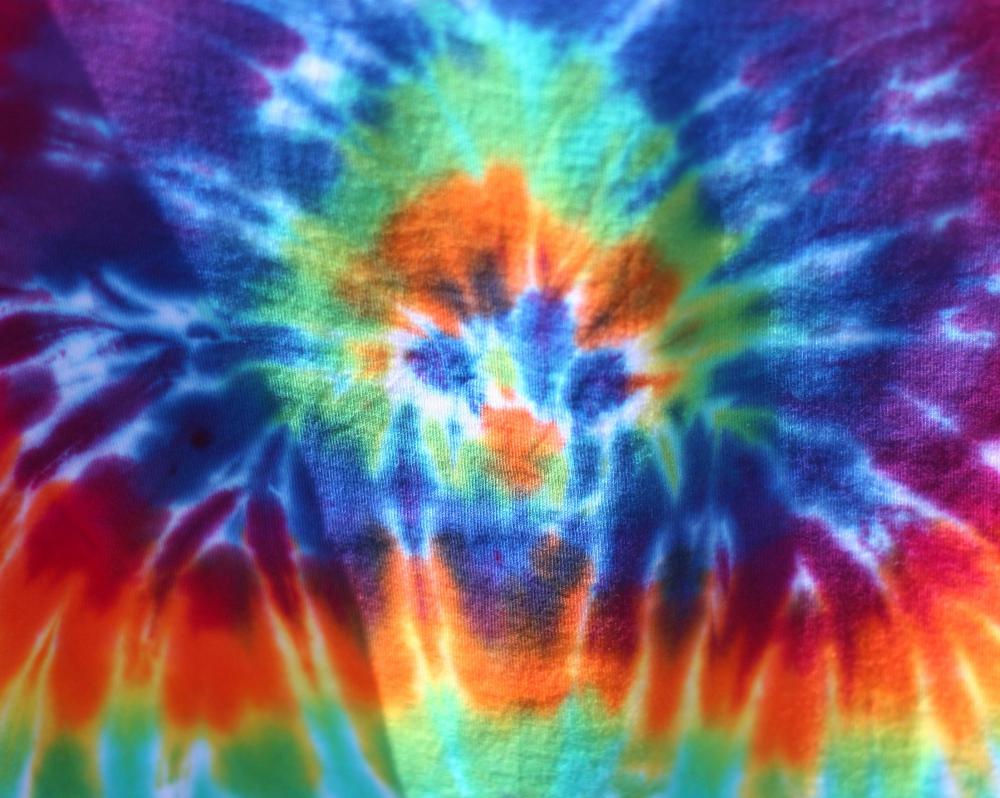tie-dyeing fabric definition
Tie and dye involves dyeing specific areas of the fabric by means of tying- the undyed fabric shows up in the base color of the fabric in patterns depending on how you tied after folding or crumpling scrunching twisting the fabric. A tie-dyed fabric or garment.
What Is Tie Dye Industrial Tie Dye Process Video Textile Apex
The process of tie-dyeing.

. The process of tie-dyeing. The dye fails to penetrate the tied sections. American Heritage Dictionary of the English Language Fifth Edition.
It is decorated as if pictures were painted on the entire clothing ornamented with not only embroidery and shibori tie-dyeing but also surihaku impressing of gold or silver foil on fabric or nuihaku embroidery and. Can be fine or thick soft or coarse takes dye well warm and crease-resistant used in clothing and carpets. A tie-dyed fabric or garment.
A hand method of producing patterns in textiles by tying portions of the fabric or yarn so that they will not absorb the dye. Tie-dyeing in American English. Copyright 2016 by Houghton Mifflin Harcourt Publishing Company.
To dye fabric after tying parts of the fabric so that they will not absorb dye giving the fabric a streaked or mottled look. Tie dye is a technique for dying natural fabrics that results in interesting colorful patterns. Tie-dyeing definition a process of hand-dyeing fabric in which sections of the fabric are tightly bound as with thread to resist the dye solution thereby producing a.
Also called tie-and-dye tie-dye. The common English translation of the Japanese word shibori is tie-dye. To dye fabric after tying parts of the fabric so that they will not absorb dye giving the fabric a streaked or mottled look.
However a more accurate translation is shaped resist dyeing which describes the inherent patterning process of manipulating the two-dimensional cloth surface into three-dimensional shapes before compressing them to dye. Basically what you do is tie some parts of the item of clothing together so that they dont absorb the dye. 3 The low-quality slightly coarse texture of the silk traditionally used in the process was important to the takeup of the dye and the ability to layer the fabric within the dye process as the fabric would be folded eight times with the ideal fabric weighing no more than 100 g 35 oz per 23 cm 38 cm 91 in 150 in piece.
Non-woven fabrics are webs of fibres that. After drying the fabric is untied to reveal irregular circles dots and stripes. Tie-dye and printing are the methods where the color is applied in a localized manner.
A fabric or garment dyed by tie-dyeing. American Heritage Dictionary of the English Language Fifth Edition. Tie-dyeing tīdīing USA pronunciation n.
Tie-dyeing method of dyeing by hand in which coloured patterns are produced in the fabric by gathering together many small portions of material and tying them tightly with string before immersing the cloth in the dyebath. Noun tie-dyeing a method of dyeing textiles to produce patterns by tying sections of the cloth together so that they will not absorb the dye 0. Tie-and-dye tie-dye Most material 2005 1997 1991 by Penguin Random House LLC.
The process of tie-dyeing. The technique involves crumpling pleating or folding the fabric into various patterns then tying it with string which is what gives it its name. Definition in the dictionary English.
Match all exact any words. Tie-dye is a method in which you dye textiles to generate patterns. The dye is adsorbed onto the fibre surface and ideally diffuses into the whole of the fibre.
Copyright 2016 by Houghton Mifflin Harcourt Publishing Company. Textiles a process of hand-dyeing fabric in which sections of the fabric are tightly bound as with thread to resist the dye solution thereby producing a variegated pattern. To dye fabric after tying parts of the fabric so that they will not absorb dye giving the fabric a streaked or mottled look.
The tied fabric is dipped into vats of dye then wrung out and rinsed. A process of hand-dyeing fabric in which sections of the fabric are tightly bound as with thread to resist the dye solution thereby producing a variegated pattern. Tie-dyeing in American English ˈtaiˌdaiɪŋ noun a process of hand-dyeing fabric in which sections of the fabric are tightly bound as with thread to resist the dye solution thereby producing a variegated pattern Also called.
Application Exhaust dyeing vessel Exhaust method In the exhaust method the dye is transported to the substrate by the dye liquors motion. This way the dye only affects those parts that are exposed. Verb with object tie-dyeing to dye fabric by tie-dyeing.
A tie-dyed fabric or garment.
The Entire History Of The Tie Dye Shirt Updated July 2020 The Adair Group
The Entire History Of The Tie Dye Shirt Updated July 2020 The Adair Group
What Tie Dye Means Wardrobe Advice
History Of Bandhani Or Indian Tie Dye Technique The Adair Group
What Is Tie Dye Fabric Casey Textile
A Step By Step Guide To Tie Dye In The Classroom The Art Of Education University